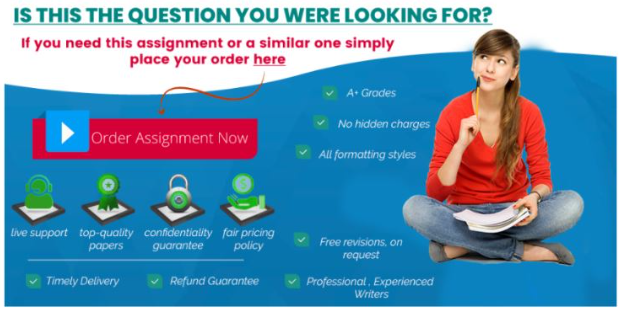Company Choice Essay Overview
Business Principle in a Global Economy Fall 2025 Company Choice Essay plus Bonus Video Presentation with Written Summary Option Assignment Instructions
Professor: Assignment Due: 4 pm (CST), Saturday, November 15 (via Turn it in link on CANVAS) Requirements: See format section. Special Notes: Please see Grammar, Spelling and Simple Writing Techniques section
When writing research or academic papers, it is common to use outside sources to inform your own ideas. However, it is critical that the necessary citations are provided to these outside references. Citation is important because it shows that you obtained information or ideas from another source, such as a textbook, website, or research article. By failing to cite, you are falsely portraying someone else’s ideas as your own; this is considered plagiarism, which is a form of cheating.
Company Choice Essay plus Bonus Video Presentation Option Assignment 150 points
This semester, we will discuss the challenging context of international business, as well as the internal and external forces with which international firms must contend. To fully understand the unique issues international firms face requires close study of how a company within an industry addresses a particular problem. In this assignment, you will apply the concepts discussed in this course to a real-world example.
The requirement for this assignment is that you must select at least ONE United States (US) or international company within your industry choice (for example, if you are in the social media industry you must write about a social media company (ex: TikTok), not a company outside of this industry, for example, Nike) and write an essay where you will argue if your company of choice has succeeded or failed to expand internationally. Your analysis will show how the company initially formed, what problems it faced as it tried to grow and expand initially, some of the issues the company faced as it grew using at least two of the concepts from the class lecture topics we have talked about this semester (for example, labor, competitive strategy, marketing, supply chain, etc.), and finally, in your conclusion, what is the international outlook for the company’s future (if you do not think your company will expand internationally, you must give a reason why using the concepts we have studied this semester.) To help guide you through the writing process, I have included a very specific format for the assignment.
Format Final paper drafts will be due by 4 pm (CST), Saturday, November 15. Papers will need to be submitted as a Microsoft Word document or Adobe .pdf document via the Turn-it-in Link on CANVAS. The paper must be between 4 – 5 pages, double-spaced, and use no higher than 12-

point font and 1-inch margins.
Company Choice Essay plus Bonus Video Presentation Option Assignment: This assignment requires you to apply concepts studied in the course regarding a company of your choosing within the industry for which you signed up.
a. COMPANY CHOICE ESSAY: For students who wish to complete just a traditional essay, follow this option. The industry essay requires you to apply concepts studied in the course regarding a company of your choosing within the industry for which you signed up (this means if you are in the social media industry you must write about a social media company, not a company outside of this industry, for example, Nike).
• The essay must be between 4 and 5 pages (not including your sources page), double-spaced, and use no higher than 12-point font and 1-inch margins. Your essay must be submitted as either a Microsoft Word document (.doc or .docx) or Adobe .pdf document.
b. Bonus (50 points): VIDEO PRESENTATION OPTION: For students who wish to create a bonus video presentation option need to follow these instructions. This option allows you to create a minimum five (3) minute video presentation (PowerPoint, YouTube video, etc.) regarding a company of your choosing within the industry for which you signed up (this means if you are in the social media industry you must write about a social media company (ex: TikTok), not a company outside of this industry, for example, Nike). Students must attach at the end of their essay a YouTube link that allows the professor and the TA to watch your video.
For the paper, footnotes or endnotes are not required however, students must cite their sources using APA style citations.
Paper Outline:
YOU MUST USE THE HEADINGS BELOW IN YOUR PAPER OR WRITTEN SUMMARY AND YOU MUST ANSWER EACH QUESTION IN THE HEADING!!!
Your essay and bonus presentation must address each of the specific set of questions laid out below. It must be divided into the following parts listed below. I am doing this to help students better organize their thoughts when putting their essays together.
(Argument, Introduction, Problem, Implications, Analysis, Conclusion)
1. Argument: What is your paper’s argument? Your argument paragraph (at least three to
four well-thought out sentences) will answer the following question: Has your company of choice succeeded or failed to expand internationally?
2. Introduction: Introduce the company – who/what are they and what do they do? What is its history? How did they develop? How are they structured (multi- domestic, truly global, etc.)?
3. Problem and Implications: What problem(s) did the business(es) face and what were the primary causes? What additional factors affected the situation? How did the business(es) work to solve the problem(s)? Were the business(es) successful in solving the problem(s)? Why or why not? What are the potential implications of the issues the companies faced? In other words, how did (or how will) the problem impact the business(es)?
4. Analysis: How can the theories and concepts we have learned in class be applied to or explain the situation? (At least two concepts from the class lectures topics)
5. Conclusion: What is the international outlook for the company’s future (if you do not think your company will expand internationally, you must give a reason why using the concepts we have studied this semester.)
6. References Page (One page in addition to your four to five (4 – 5) page essay writing requirement): List each of the sources you used to write your paper at the end of your paper. This page does not count as a page of written text.
Sources You will need to use a wide variety of sources in this paper. You can use any of the following sources (sources are not necessarily limited to this list, but you should only use REPUTABLE sources): books, journal articles, news articles, and company websites. You should rely on a diversity of sources, and every claim you make in the paper should be cited.
Sources MUST be properly cited throughout the paper using APA format. Please contact your TA if you need further assistance. The following websites provide guides to help students with writing techniques and styles and to help students properly cite their sources.
The following websites provide guides to help students with writing techniques and styles and to help students properly cite their sources.
A. University of Houston: APA Style Guide Website: https://guides.lib.uh.edu/c.php?g=432724&p=2953699
B. Purdue Online Writing Lab: (https://owl.purdue.edu/owl/research_and_citation/apa_style/apa_formatting_and_ style_guide/general_format.html
C. Penn State Libraries APA Citation Guide: https://guides.libraries.psu.edu/apaquickguide/intext#:~:text=Include%20an%20in%2 Dtext%20citation,entry%20in%20your%20reference%20list
Plagiarism Plagiarism is taking somebody else’s words and passing them off as your own. IF YOU COPY FROM A SOURCE OR ONLY CHANGE A FEW WORDS WITHOUT PROPERLY CITING THE ORIGINAL SOURCE (IN QUOTATIONS FOR DIRECT QUOTES), THIS IS PLAGIARISM!!! THIS IS A VIOLATION OF UH’S ACADEMICY HONESTY POLICY.
IF YOU CHOOSE TO PLAGARIZE (EITHER INTENTIONALLY OR UNINTENTIONALLY), YOU NOT ONLY RUN THE RISK OF FAILING THE ASSIGNMENT, BUT YOU ALSO RUN THE RISK OF FAILING THE ENTIRE COURSE AND POSSIBLY WORSE.
You must use your own words, properly cite everything that is not your own words, and use as few quotes as possible. Please refer online (see websites above) to how to properly cite sources (direct quotes, paraphrasing someone else’s quotes, etc.) Students will see point deductions and worse for failing to cite sources.
It does not matter if you intended to plagiarize or not—if you try to pass somebody else’s words off as your own, you will receive a ZERO for the final paper grade, possibly fail the course grade or even referred to UH’s for academic dishonesty. Please see the course syllabus under the heading “Academic Honesty” and the University of Houston’s Academic Honesty Policy (https://www.uh.edu/provost/policies-resources/honesty/) for more information.
Other Notes START NOW!!! The assignment due date will be here before you know it!!! You should not wait until the last minute to get started. If you need any help or guidance, the TA’s and me are more than happy to help if you reach out!
Late Policy: See syllabus for an explanation
Assignment Point Deductions Assignments that are turned in early or on time will be subject to point deductions if students do not follow the assignment instructions. I trust the TAs when it comes to grading your assignments.
The following items will cause you to lose points on your assignments.
1. If a student does not include an argument section for their paper, they will automatically lose ten percent (10%) of the final paper grade.
2. If you do not cite your sources, or if you use AI to help write your paper, you risk the probability of failing this assignment. If students have a Turn-it-in similarity score over twenty-five percent (25%), students will lose points. Please see Professor Johnson’s
Academic Honesty Guidelines on CANVAS for more details.
3. If a student writes about a company outside of their industry choice, (for example, if the student is in the social media industry and writes about Nike), and the student does not get approval to write about the company from both their TA and Professor Johnson that student WILL AUTOMATICALLY LOSE 50 PERCENT OFF THEIR FINAL ESSAY GRADE! There is no exception to this rule. Period. If students have a question or unsure if their company fits in their industry, they MUST CONTACT THE TA AND GET APPROVAL TO WRITE ABOUT THEIR COMPANY OF CHOICE. If there is any question about whether the company fits inside the student’s industry choice and the student fails TO GET APPROVAL TO WRITE ABOUT THAT COMPANY BY BOTH THE TA AND PROFESSOR JOHNSON, THERE WILL BE A 50 POINT DEDUCTION FROM THE STUDENT’S FINAL ESSAY GRADE.
4. Ten percent (10%) of your assignment grade will be deducted for every page under the minimum requirement (that means FULL written pages, and your works cited page does not count).
5. Professor Johnson’s Academic Honesty Guidelines: If you do not cite your sources, of if you use AI to help write your paper, you risk the probability of failing this assignment. If you do not cite your sources, you risk the probability of failing this assignment or worse. See the section labeled “Plagiarism” above for more details. If you do not know how to cite your sources, contact your TA. Do not run the risk of failing this assignment or worse because of intentional or unintentional academic dishonesty.
6. If you cite the sources but forget the works cited page, 10% percent of your assignment grade will be deducted.
7. If you cite the sources but do not use proper APA formatting, 5% percent of your final assignment grade will be deducted.
Grammar, Spelling and Simple Writing Techniques You should write in complete sentences and in paragraph form. To help each of you with writing techniques and common mistakes in writing, I have included with these instructions a helpful writing source.
I trust the TA when it comes to grading your papers. Assignments that seem unorganized or full of grammatical or spelling errors, points will be deducted from the paper at the TA’s discretion. If the paper is completely unreadable, the TA’s and the professor will discuss the student’s paper to determine it is acceptable work or not. Any assignment deemed unacceptable will receive a 0.
To help students complete the best assignment possible, I have provided below a very good source on how to effectively write a paper. This source has been used as a very effective and
simple tool for teaching students and nonstudents how to write effectively for over 100 years (the book was originally published in 1918). You can find a copy of this book anywhere. I highly suggest you purchase a copy.
Source: Strunk, William, and E. B. White. The Elements of Style. (originally published in 1918 but any edition of the book will work)
Note of interest about one of the authors: If the name E.B. White rings a bell, it is because he is the author of the world famous children’s story Charlotte’s Web (originally published in 1952).
Copies of the Elements of Style are available for free almost anywhere online and several eBook copies are available through the University of Houston library website.
Just do a simple search through the catalog to find a copy. For example, it is available through ProQu
-
Has your company succeeded or failed to expand internationally?,
-
Who is the company what is its history and how is it structured?,
-
What problems did the company face what caused them, and how were they solved?,
-
How can at least two course concepts explain the company’s situation?,
-
What is the international outlook for the company’s future?










